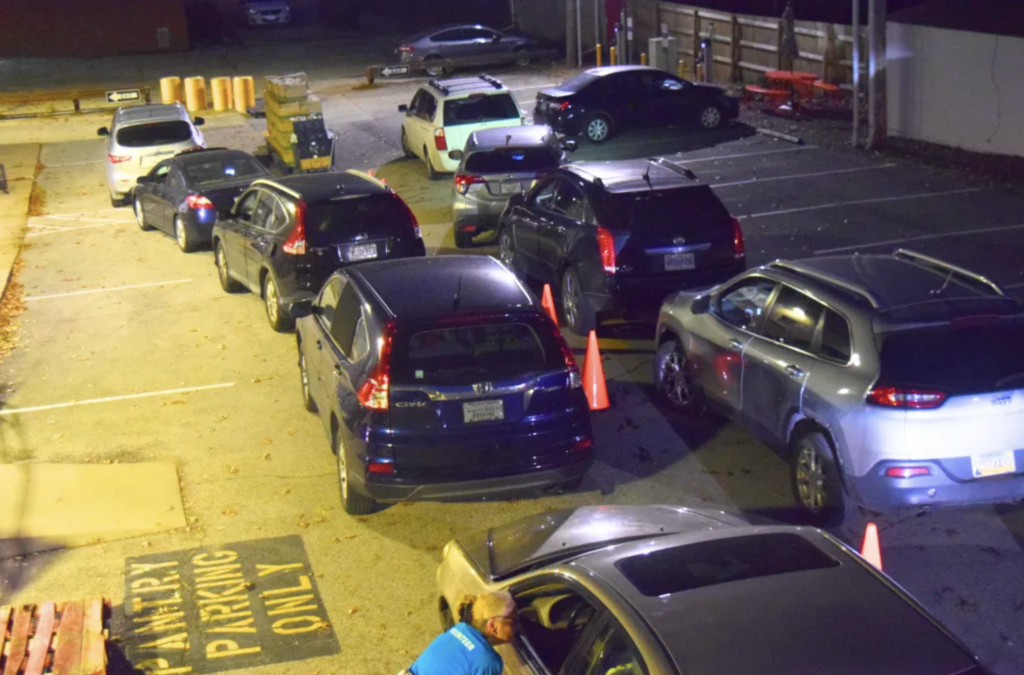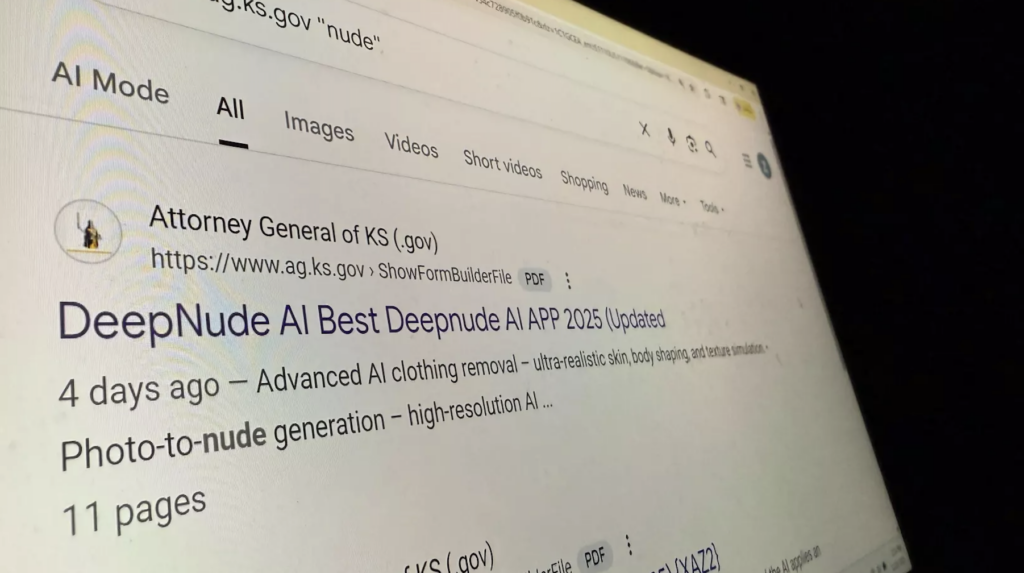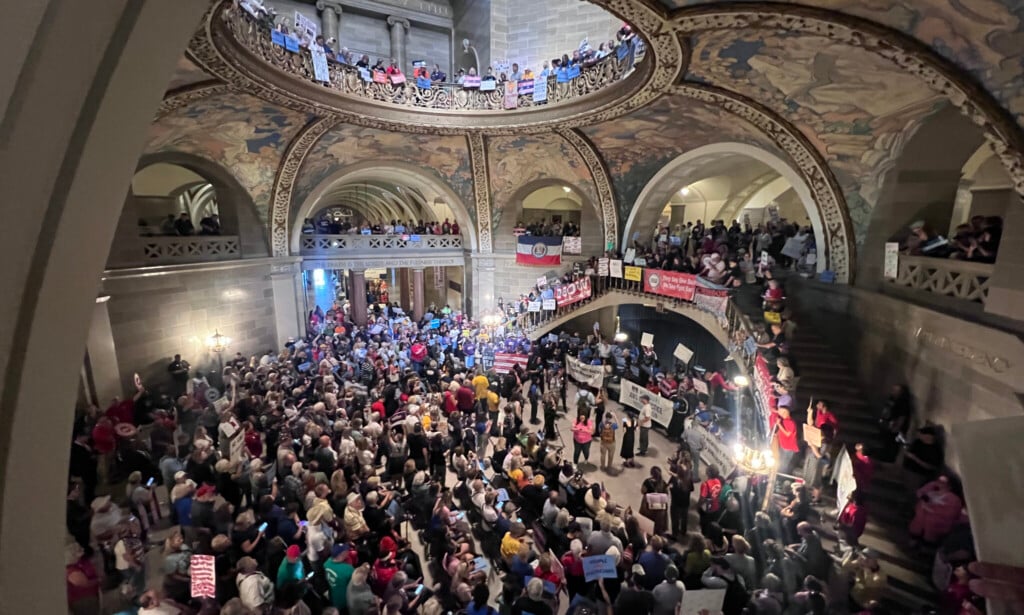Journalist Justine Barron on writing They Killed Freddie Gray and navigating a torrent of misinformation
Throughout her new book They Killed Freddie Gray, Justine Barron uncovers new facts and information, invalidating many of the details that have surrounded the death of Freddie Gray for nearly a decade.
On April 12, 2015, Freddie Gray was with two friends when they were approached by a Baltimore police officer in West Baltimore. Having prior drug charges and other minor charges, Gray ran from the officer before being detained and arrested in Gilmor Homes housing project.
Around an hour later, when Gray and the officers finally arrived at a Baltimore police station, he was found in a coma, not breathing. Barron’s investigative work shows that Gray’s death was a result of excessive force from police officers, contradicting the prosecutors’ claims of a ‘rough ride‘ while being transported to the local police station being the cause of death. He died just a week later on April 19 due to a cervical spine injury from the incident.
After his death, nationwide protests, known as the Baltimore Uprising, began in an attempt to raise action against the Baltimore police officers involved in the case. Shortly after, on May 1, Baltimore State’s Attorney Marilyn Mosby filed charges against the six officers who Barron claims ‘killed Freddie Gray,’ putting an end to the uprising as members of the community celebrated and awaited the trials.
The prosecution’s case relied heavily on the information that they had been given from the Baltimore police department, refusing to use any evidence that did not fall under the alleged ‘rough ride’ being the reason for Gray’s death. Barron’s extensive investigation proves that Gray’s initial injuries occurred by excessive force from officers before ever throwing him into the van, furthering his need for medical attention.
Below is a conversation between Barron and The Pitch about Gray’s death, The Baltimore community, Baltimore law enforcement, and her overall experiences while researching and writing They Killed Freddie Gray.
The Pitch: What were some of the obstacles you faced when trying to dig through so much information and trying to find people willing to talk to you about the case?
Justine Barron: There was a vast cover up among city leaders on various sides of the case. So the police department and the prosecutors who indicted some of the officers were in agreement about burying the same evidence. So uncovering that evidence took developing sources over a number of years. When you have police brutality cases there is often a very earlier and persistent attempt to cover up key evidence. And that meant that even some of the detectives who worked on the case weren’t give access to all of the evidence in the case, it was being protected. So that was the biggest challenge.
As far as speaking to witnesses, many were very forthcoming, especially the older ones. Some of the younger ones have felt burned by having tried to come forward initially, and feeling disappointed by the media and by the prosecutors who seemed to care and then in the end didn’t really tell their stories. So that was another major obstacle.
How have you seen the Baltimore community band together over the years due to this experience if you have?
I would say what happened was this case caught a lot of attention and police were clearly withholding information at first. Then after Freddie Gray died, after a week in the hospital in a coma, they released information that just didn’t seem to tell a full story. So the case caught national attention and there was what was known as the Baltimore Uprising, which was all kinds of people in Baltimore as well as people from outside of Baltimore marching in the streets.
After State’s Attorney Marilyn Mosby filed charges against the officer, the uprising immediately ended because it seemed like accountability had been achieved. After the first trials, it became clear that her office wasn’t really putting on a very strong case, wasn’t holding the officers accountable. At that point there was sort of, in Baltimore, universal disappointment with her office, but that moment of the uprising had kind of ended and it was just this collective disappointment and frustration, but I would also say kind of giving up.
The Baltimore Uprising was a unique moment, it lasted a few weeks. After that, while the people of Baltimore share a lot feelings about this case, whether they thing Marilyn Mosby tried or just didn’t try at all, there hasn’t really been any collective response since then. And that was also a barrier for us because the media moved on, some civilians had sort of made up their mind about what happened and didn’t really care to hear more.
Have you seen any changes in how the Baltimore law enforcement proceeds since the case?
Surface changes. There was a lot of talk made about some changes that were instituted after the case; body cameras, seat belting passengers in vans, but of course, as my book reveals, Freddie Gray wasn’t killed from being unseat belted. So that’s a positive change, but it wasn’t what caused his death, he was killed by officers throwing him head first into the van.
This was a national movement, and unfortunately it’s one of those kind of police reform actions in quotes where there is this nod to community wanting more transparency, and the police department does something to give more transparency, but body camera footage is controlled by police departments, released strategically, often easily manipulated, which is another topic in my book.
A federal consent decree was brought in allegedly to kind of monitor the Baltimore police department, but it’s all cosmetic changes. In terms of substantial changes, in terms of fewer people getting killed who shouldn’t be, more transparency around those deaths, I would say there hasn’t been any changes.
As a journalist, what kind of emotional toll has weighed on you since you have been working on uncovering the truth of this case for so many years?
The hardest part wasn’t hearing the story or telling the story. I’m aware of difficulties in life and I worked in prisons before, I am sort of aware of all that. The hardest part was the barriers that we faced, originally me and my investigative partner, Amelia McDonell-Parry, before the book came out trying for many many years to tell the public what really happened to Freddie Gray.
So the emotional part for me was the media, especially in Baltimore but also nationally, not seeming to care or characterizing our work as kind of out there or crazy. That particular feeling is being gaslit, it’s being told that your crazy when you have facts and evidence. Becoming aware over the years of how sort of corrupt and complicit the media can be has been disappointing.
Obviously it’s not as hard for me as the witnesses who saw it and were ignored, or dismissed, or told that they were lying. That is the sharpest pain that I outline, as well as the loss of their friend, but my experience was an extension of that.
What does it mean to you to finally uncover many facts, these missing pieces and get to finally publish the book for family and friends of Freddie and the city of Baltimore as a whole?
I don’t know if his family is gonna know and I don’t know if the city as a whole is gonna know because of this media barrier. The Baltimore Sun isn’t covering the book, the Baltimore Banner, they aren’t going to cover new evidence of Freddie Gray’s death and they’re going to keep writing about it as if the same information that was shared in 2015 is accurate.
I still live with that pain. This was the biggest story in Baltimore history in the longest time and they’re not interested in new evidence. Probably because they don’t want to have to cite me or they don’t want to have to admit that they got the story wrong, it’s actually probably that. But I do know that I have talked to witnesses who feel clarified because they saw Freddie Gray being abused in different ways and they were later told that his cause of death happened while the van was moving from nothing that they saw. So it is gratifying to be able to provide a sense of wholeness.
It’s not like the book has been ignored, I’ve gotten some national coverage. I think the best answer to this is I’m not going to be satisfied until more people know. One of the biggest questions I’ve gotten from people is why didn’t the public know this if this was true the whole time? Unfortunately a huge part of the answer is local media complicity.

The Knife that Freddie Gray had During His Arrest. Police Were Under the Assumption that Gray had a Switchblade. // Courtesy of Justine Barron
Your book displays true, professional investigative journalism into a very critical case in our entire country. How do you hope that your work influences other journalists when covering similar circumstances in the future?
I’m not hopeful that I’m gonna be super influential, but this is what I would like to see in the media. I would like to see far more skepticism of police stories, I would like to see media outlets refuse to repeat police narratives without something to support them, or a full critical investigation of them. I mean what we had in this case was just a constant turning out of information that the police department shared, so media got lazy and stopped really looking into things.
So I would like to see those habits broken. In the same way that the media kind of collectively decided, ok were not going to just show mugshots of people because police say that they’re suspects. It hasn’t happened everywhere but there has been a sort of movement in that way. We have to just stop building stories around police statements because they’re incentivized, practiced, and lying especially in cases like this.
The prosecutors in this case built their case around what the police said happened, so that was the failure of their case. And that is outrageous if you think about it because the police officers were the defendants. In what kind of homicide case do you just build it all around what the suspect says. The media does the same thing. If police kill someone, why are they the go to source? They’re the suspect.
What do you hope members of law enforcement get from reading your book?
With Freddie Gray, it really polarized people who supported police against black lives matter movement. It became very blue lives matter vs black lives matter around that case and around Marilyn Mosby. A lot of officers I know and have met tend to take that side because they believe the information they were told.
There are police officers who are aware of corruption in their department, and they become aware of it when it effects them. If they get wrongly accused by another officer of something, or if they see the wrong people getting promoted. I would like for them to extend that, to understand that when these cases happen, just because they’re inside the department doesn’t mean they’re getting the right information.
After conducting research and writing the book for the past six years, what is next for you?
I was feeling before the book came out that I was going to have to quit journalism because I was running into similar barriers with all my stories. Even when I had really important stories. Last year, I had a story of sexual harassment by a politician and I was running into difficulties with the local media getting my stories out there for all of the same reasons I outlined in my book with Freddie Gray. I just felt like I can’t do this anymore. It wasn’t that I didn’t think I should or that I didn’t love it. I just felt like somehow I wasn’t going to win at this because I’m too independent, because I don’t have a Baltimore Sun badge.
But then the book has gotten some positive response, more attention that I thought, and so I’m reconsidering that and I’m looking at the cases that I’ve investigated in the past that I need to pick up. I’m feeling more optimistic that I can continue to change some of these narratives that have become so entrenched by doing investigative journalism.








